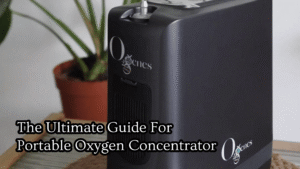Infertility is a global issue affecting approximately one in six couples worldwide. A common cause of female infertility is endometrial receptivity, which refers to the quality of the uterine lining where an embryo implants. While in vitro fertilization (IVF) often produces high-quality embryos, their successful implantation depends on the receptivity of the endometrium. However, a substantial number of embryos fail to implant, leading to frustration and disappointment for couples seeking pregnancy. Among various factors influencing endometrial receptivity, vascularization and oxygenation are of paramount importance. in this guide we can learn Hyperbaric Oxygenation as a possible therapy of choice for infertility treatment
Objective
This study aimed to assess the impact of hyperbaric oxygen therapy (HBO) on uterine vascularization, sub-endometrial perfusion, and endometrial quality, using transvaginal color Doppler sonography.
Materials and Methods
Over a three-year period, 32 women with unexplained infertility were enrolled in a randomized study. The patients, who had not previously undergone assisted reproductive techniques (ART), were treated in a multi-place hyperbaric chamber at a pressure of 2.3 ATA for 70 minutes per day, for seven consecutive days, starting on the 5th day of their menstrual cycle. The effects of hyperbaric oxygen therapy were assessed using transvaginal color Doppler sonography. Ten patients were treated at a pressure of 1 ATA as control subjects, following the recommendations of the European Underwater and Baromedical Society (EUBS).
Results and Discussion
The study revealed that, prior to therapy, the majority of patients exhibited unfavorable endometrial receptivity, with poor sonographic characteristics (Grade C) and inadequate thickness. However, after undergoing HBO therapy at 2.3 ATA, 82.9% to 84.8% of patients demonstrated an excellent response of the endometrium, achieving optimal quality during the pre-ovulatory and ovulatory phases. The thickness of the endometrium at the time of ovulation significantly improved to 11.1 mm ± 2.6, indicating a positive prognostic factor. Furthermore, the mapping of subendometrial blood vessels during cycles covered by HBO therapy showed an intensive capillary network with low resistance (Ri < 0.45), indicating robust neoangiogenetic processes.
The Doppler flowmetry of the uterine arteries indicated slightly higher-than-expected resistance before therapy, which decreased but was not significant during HBO therapy. The analysis of control patients treated at 1 ATA did not yield similar improvements.
Abstract
Endometrial sonographic and color doppler features can be used to predict the occurrence of pregnancy in natural or stimulated cycles. Implantation will usually only take place if the endometrium has reached a certain stage of vascularisation and development. The aim of this study was to evaluate endometrial development – endometrial thickness and reflectivity, sub-endometrial, endometrial and uterine perfusion, after hyperbaric oxygenation, using
a transvaginal color doppler. During a three years period, 32 women with unexplained infertility were entered into a randomised study. The patients were treated in a multiplace HAUX chamber at a pressure of 2.3 ATA for 70 minutes, 7 days consecutively beginning with 5th day of the menstrual cycle. The evaluation of the effects of hyperbaric oxygen therapy was carried out by transvaginal color doppler sonography which was continuously used starting from 8th day of the menstrual cycle until the ovulation in the cycles when the therapy was applied, one month before and one month after the therapy. Folliculometry in the cycles when hyperbaric oxygen therapy at 2.3 ATA was applied, indicated an excellent response of endometrium. Thickness of endometrium at the time of ovulation was 11.0 ± 2.6mm. Desirable quality of endometrium was significantly better in the cycle when HBO therapy had been applied (p<0.001). The doppler flowmetry of the uterine arteries indicated that the uterine blood vessel resistance was slightly higher than expected. Mapping of sub-endometrial blood vessels in the cycles covered by hyperbaric oxygen therapy showed the intensive capillary network of the endometrium with low resistance Ri< 0.45. The oxygen used under higher pressure – oxygen as a drug, may have an extraordinary significance for better outcomes of pregnancy implantation by improving endometrial receptivity. If endometrial receptivity is conditioned by adequate
vascularisation and oxygenation, then hyperbaric oxygen therapy is the treatment of choice.
Key words: endometrial receptivity, hyperbaric therapy, infertility
Conclusion for Hyperbaric Oxygenation
Endometrial receptivity is a significant factor among a series of conditions determining the future pregnancy. It is conditioned by regular anatomy of the uterus and its cavity, optimal hormonal status as well as by optimal vascularization and oxygenation. The application of hyperbaric oxygen provides, in so far the first two factors were accomplished, an optimal quality of endometrium and adequate sub endometrial vascularization and oxygenation. If endometrial receptivity is conditioned by adequate vascularization and oxygenation, then hyperbaric oxygen therapy is the treatment of choice.






